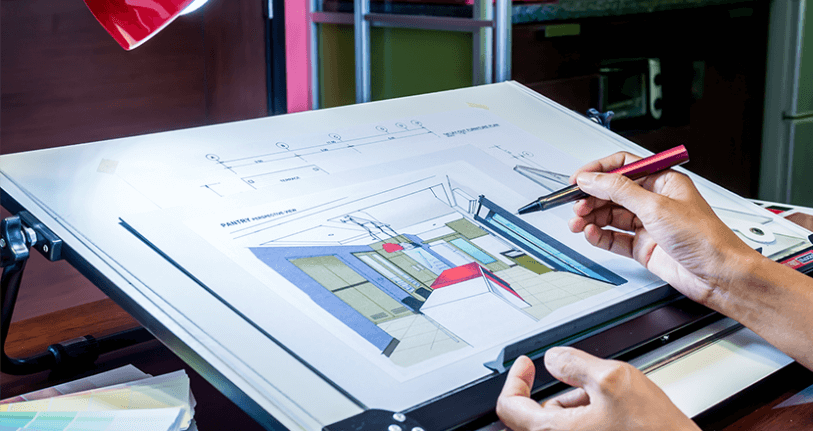
Interior designing has emerged as a lucrative and fulfilling career choice for many creative individuals. It offers a unique blend of artistic flair, technical skills, and practical knowledge. However, like any other profession, it has its own set of challenges and rewards. In this article, we will explore the various aspects of interior designing as a career option.
Overview of Interior Designing
Interior designing is the art and science of enhancing the interior of a space to achieve a healthier and more aesthetically pleasing environment for the people using it. It involves creating functional and attractive designs for homes, offices, restaurants, hotels, and other spaces. Interior designers work closely with clients to understand their needs and preferences and then develop designs that meet those requirements.
Why Choose Interior Designing as a Career?
Creativity: Interior designing allows individuals to express their creativity and imagination. Designers have the opportunity to create unique and innovative spaces that reflect their artistic vision.
Job Satisfaction: Seeing a project come to life and the impact it has on people’s lives can be incredibly rewarding. Interior designers often develop close relationships with clients and derive satisfaction from meeting their needs and exceeding their expectations.
Versatility: Interior designing offers a wide range of career options. Designers can specialize in residential, commercial, hospitality, or healthcare design, among others. They can also choose to work for design firms, architectural firms, or start their own businesses.
Job Security: The demand for interior designers is expected to grow in the coming years. As people increasingly prioritize aesthetics and functionality in their living and working spaces, the need for skilled interior designers will continue to rise.
Financial Rewards: Interior designing can be a financially rewarding career. Experienced designers with a strong portfolio can command high fees for their services. Additionally, as designers gain experience and establish their reputation, they may attract high-profile clients and projects.
Education and Training
While formal education is not always required to become an interior designer, most professionals in the field have a bachelor’s degree in interior design or a related field. Some designers also pursue a master’s degree for advanced knowledge and specialization. Additionally, many states require interior designers to be licensed, which typically involves passing the National Council for Interior Design Qualification (NCIDQ) exam.
Job Opportunities
Interior designers can find employment in a variety of settings, including:
Design firms: Many interior designers work for design firms, where they collaborate with other designers, architects, and clients to create innovative designs.
Architectural firms: Interior designers working for architectural firms often collaborate with architects to create cohesive designs that integrate interior and exterior spaces.
Self-employment: Some interior designers choose to start their own businesses and work as independent contractors. This allows them to have more control over their projects and schedules.
Salary Packages
The salary of an interior designer can vary depending on factors such as experience, location, and specialization. According to the U.S. Bureau of Labor Statistics, the median annual wage for interior designers was $59,120 in May 2020. However, experienced designers with a strong portfolio can earn significantly more, with some earning six-figure salaries.
Conclusion
Interior designing is a dynamic and rewarding career choice for creative individuals who have a passion for design and a desire to improve people’s lives through their work. With the right education, training, and experience, interior designers can build successful careers and make a positive impact on the world around them. If you have a knack for design and a passion for creating beautiful and functional spaces, interior designing could be the perfect career for you.
What is the highest-paid interior Design Job?
The highest paid interior design jobs often involve specialized areas of the field, such as:
Commercial Design: Interior designers who specialize in commercial spaces, such as offices, hotels, and retail stores, often command higher salaries due to the complexity and scale of these projects.
Residential Design: Experienced residential designers who work on high-end projects for affluent clients can also earn significant incomes.
Hospitality Design: Designers who focus on hospitality spaces, such as restaurants, bars, and resorts, can earn high salaries, especially if they work on prestigious projects.
Healthcare Design: Interior designers who specialize in healthcare facilities, such as hospitals and clinics, can also earn high salaries due to the specialized knowledge and skills required for these projects.
Corporate Design: Designers who work for large corporations to design their office spaces often earn high salaries, especially if they work for multinational companies with extensive office spaces.
How Can I Start My Career in Interior Design?
To start a career in interior design, you can follow these steps:
Education: Earn a bachelor’s degree in interior design or a related field from an accredited institution.
Gain Experience: Gain practical experience through internships or entry-level positions in the field.
Build a Portfolio: Create a strong portfolio showcasing your design skills and projects. Networking: Build a professional network by attending industry events and connecting with other designers and professionals in the field.
Certification and Licensing: Depending on your state’s requirements, you may need to obtain certification or licensure to practice as an interior designer.
Do Interior Designers Earn Good Money?
Yes, interior designers can earn good money, especially those with experience and a strong portfolio. According to the U.S. Bureau of Labor Statistics, the median annual wage for interior designers was $59,120 in May 2020. However, experienced designers with a strong portfolio can earn significantly more, with some earning six-figure salaries.
Here is a list of countries and their approximate average salaries for interior designers:
United States: $56,040 per year
United Kingdom: £25,000 to £35,000 per year
Canada: C$50,000 to C$60,000 per year
Australia: AU$50,000 to AU$70,000 per year
India: ₹2.5 lakh to ₹6 lakh per year
United Arab Emirates: AED 60,000 to AED 120,000 per year
Germany: €30,000 to €50,000 per year
France: €25,000 to €40,000 per year
Italy: €25,000 to €35,000 per year
Spain: €20,000 to €30,000 per year
Brazil: R$30,000 to R$60,000 per year
China: ¥80,000 to ¥120,000 per year
Japan: ¥3,000,000 to ¥5,000,000 per year
South Africa: R150,000 to R300,000 per year
Please note that these figures are approximate and can vary based on factors such as the designer’s level of experience, specialization, and the size and location of the design firm.
Latest Blog Post

Branches of Engineering: A Comprehensive Overview
24 Feb, 2024
Top Engineering Colleges in Madhya Pradesh
24 Feb, 2024



